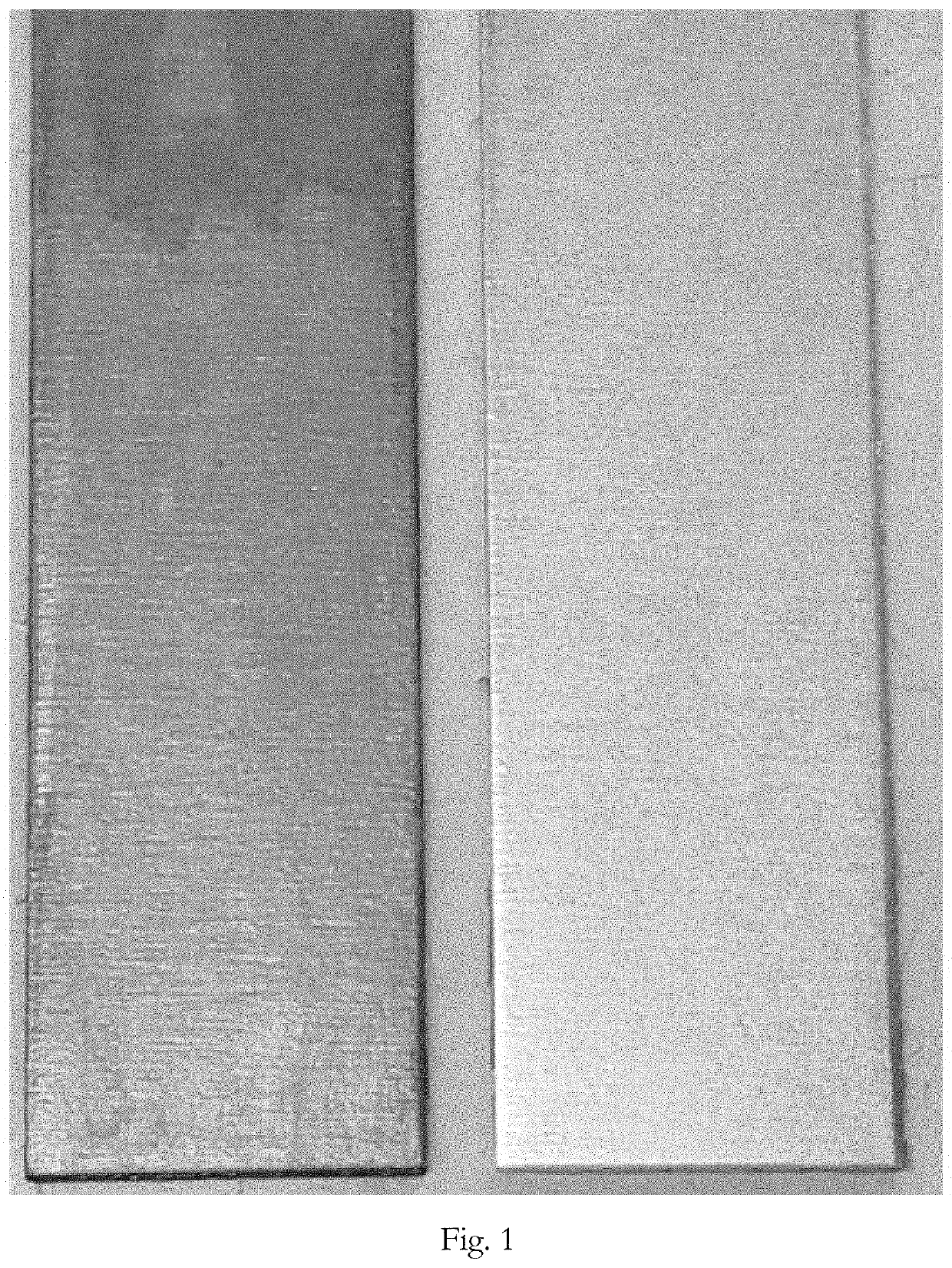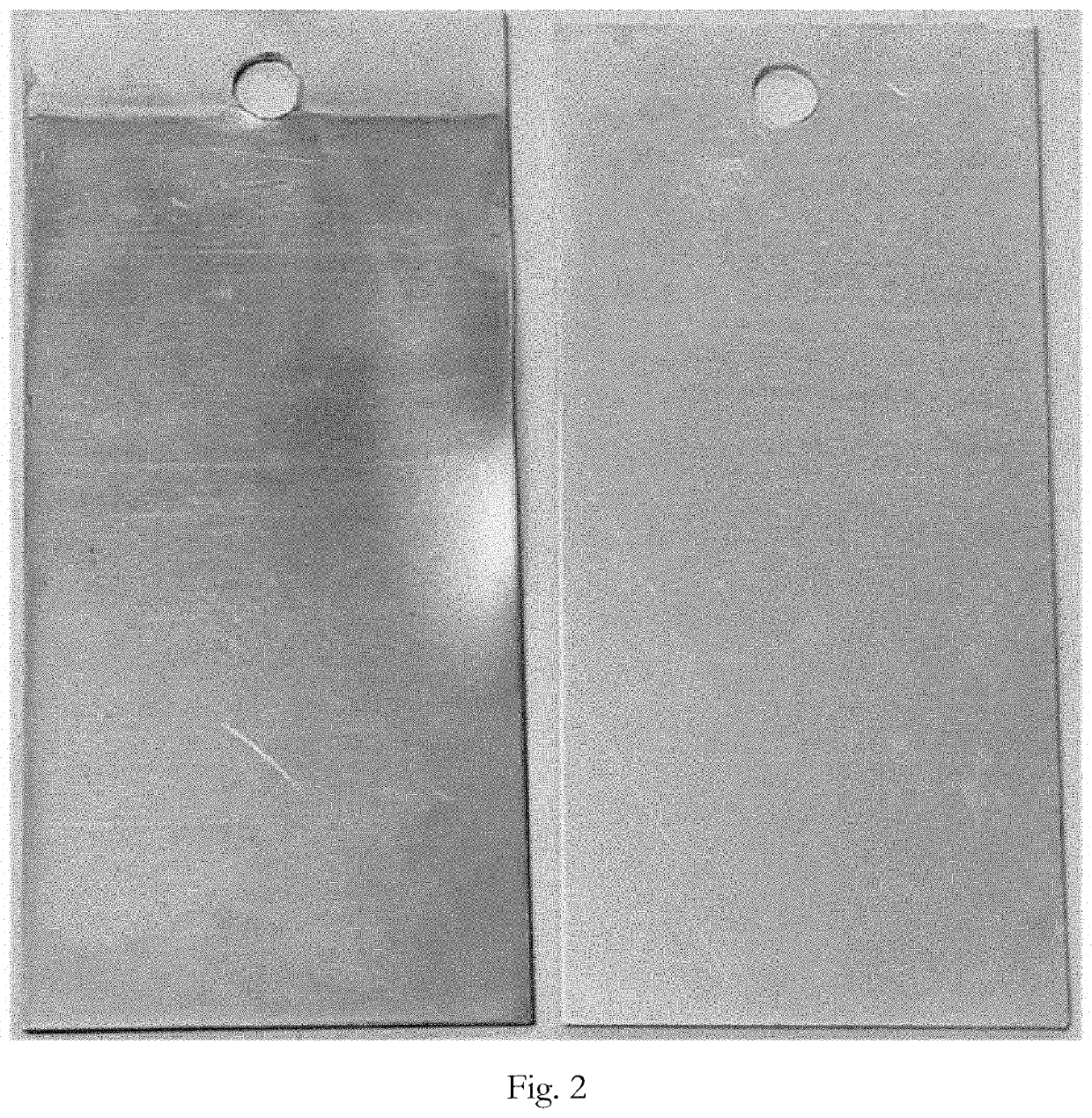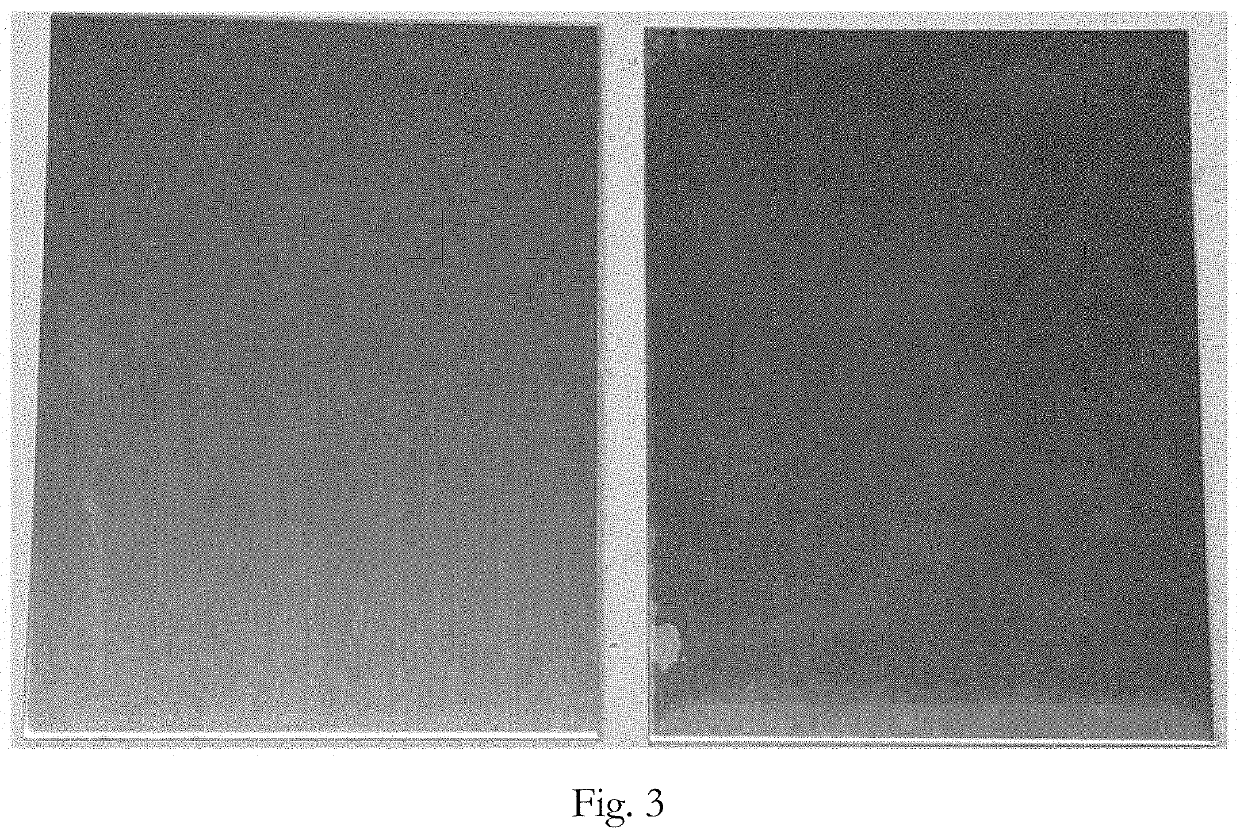Dyed trivalent chromium conversion coatings and methods of using same
a trivalent chromium and conversion coating technology, applied in anti-corrosion paints, coatings, metal material coating processes, etc., can solve the problems of increasing operating and waste disposal costs, falling out of favor, and increasing the hazards of process personnel, so as to reduce the risk of corrosion and/or other undesirable reactions, less precipitation, and easy to see
- Summary
- Abstract
- Description
- Claims
- Application Information
AI Technical Summary
Benefits of technology
Problems solved by technology
Method used
Image
Examples
example 1
[0066]A first sample of a magnesium substrate (AZ31B alloy) was coated with a dye containing trivalent chromium zirconate conversion coating solution. A second sample of the same substrate was coated with the same conversion coating except without the dye. The samples were initially cleaned by immersing them in CHEMEON Magnesium Cleaner for 5 minutes pursuant to the instructions in the technical data sheet (20% v / v, 150° F.). The samples were removed from the cleaner and rinsed by immersing them in deionized water at room temperature for 30-60 seconds. The samples were activated by immersing them in CHEMEON Magnesium Activator for 15 minutes pursuant to the instructions in the technical data sheet (25% v / v, pH 4.5, 82° F.).
[0067]The samples were removed from the activator and rinsed by immersing them in deionized water at room temperature for 30-60 seconds. The first sample was immersed in the dye containing trivalent chromium conversion coating solution for 5 minutes. The dye conta...
example 2
[0069]A first sample of a zinc substrate (pure zinc) was coated with a dye containing trivalent chromium conversion coating solution. A second sample of the same substrate was coated with the same conversion coating except without the dye. The samples were initially cleaned by immersing them in CHEMEON Cleaner 1000 for 5 minutes pursuant to the instructions in the technical data sheet (45 g / L cleaner, 120° F.). The samples were removed from the cleaner and rinsed by immersing them in deionized water at room temperature for 30-60 seconds. The samples were activated by immersing them in an acid activation bath (2.5 mL / L concentrated nitric acid) at room temperature for 5 seconds.
[0070]The samples were removed from the acid activation bath and rinsed by immersing them in deionized water at room temperature for 30-60 seconds. The first sample was immersed in the dye containing trivalent chromium conversion coating solution for 5 minutes. The dye containing conversion coating solution in...
example 3
[0072]A first sample of an aluminum substrate (6061-T6 sheet) was coated with a dye containing trivalent chromium conversion coating solution. A second sample of the same substrate was coated with the same conversion coating except without the dye. The samples were initially cleaned by immersing them in CHEMEON Cleaner 1000 for 5 minutes pursuant to the instructions in the technical data sheet (45 g / L cleaner, 120° F.). The samples were removed from the cleaner and rinsed by immersing them in deionized water at room temperature for 30-60 seconds. The samples were activated by immersing them in an acid activation bath (50% v / v concentrated nitric acid) at room temperature for 1 minute.
[0073]The samples were removed from the acid activation bath and rinsed by immersing them in deionized water at room temperature for 30-60 seconds. The first sample was immersed in the dye containing trivalent chromium conversion coating solution for 5 minutes. The dye containing conversion coating solu...
PUM
| Property | Measurement | Unit |
|---|---|---|
| wt % | aaaaa | aaaaa |
| wt % | aaaaa | aaaaa |
| wt % | aaaaa | aaaaa |
Abstract
Description
Claims
Application Information
 Login to View More
Login to View More - R&D
- Intellectual Property
- Life Sciences
- Materials
- Tech Scout
- Unparalleled Data Quality
- Higher Quality Content
- 60% Fewer Hallucinations
Browse by: Latest US Patents, China's latest patents, Technical Efficacy Thesaurus, Application Domain, Technology Topic, Popular Technical Reports.
© 2025 PatSnap. All rights reserved.Legal|Privacy policy|Modern Slavery Act Transparency Statement|Sitemap|About US| Contact US: help@patsnap.com



